Finding a better way at Sailing Leadership Forum
Published on February 2nd, 2018
The Sailing Leadership Forum has attracted leaders in the sport to meet and learn from one-another amid a full schedule of presentations on February 1-3 in St. Petersburg, FL. Scuttlebutt editor Craig Leweck shares some notes from the sessions he attended on February 2:
8:30-10:00am: The Coup: The anti-establishment forces are challenging what you do, how you do it, and how you define success by writing and following their own rules. So what do you do?
Presenter: Ron Tite – Branding and Creativity Expert, CEO of The Tite Group
This was a discussion about change – the challenges that are faced and the execution needed to succeed. The session began with how snowboarding disrupted the ski industry, facing significant initial opposition but eventually the people get what the people want. Are there examples occurring in sailing?
“A coup is driven by a belief that the world can (and should) be better. A coup is someone wrestling control from the establishment by meeting the needs of the oppressed.”
Whatever it is in this world, we are constantly reinventing ourselves. When asked about innovation, Jack Welch, chairman and CEO of General Electric was blunt: “Find a better way every day.”
Change follow stages. We begin with the rules of the current establishment, but with change comes chaos which is followed by a power vacuum. These stages lack rules, and ultimately people want the stability that comes with rules, so a new establishment gets formed. The challenge is whether you can innovate fast enough and well enough to survive the stages between the old establishment to become part of the new establishment.
An interesting message was how through the evolution of technology, it’s never been about the equipment, it’s about the experience. Sailors can relate to this.
But to successfully cause disruption, there are three variable that must occur at the same time: think – do – say. To only think, you are just a philosopher. To only do, you are not collaborating. To only say, you lack substance. All three legs are needed for the stool to stand.
Always look how to become part of the new establishment.
10:45-11:45am: Women in Sailing Leadership
Presenter: Jessica Servis (Moderator), Cory Sertl, Lynn Handy, Amanda Callahan, Pam Healy
The theme was to close the gender gap in all forms of sailing.
The sport has been so male dominated, and a consistent pathway for women through the sport toward leadership has been those male advocates that empowered them. But there are as many examples in which the opportunities were asked for. In times of opposition, being assertive is required.
It has taken time to change the paradigm in which women were not viewed highly to where we are now, in which women fill many significant leadership roles in the sport. Closing the gender gap has created a more dynamic unit as new perspectives get presented.
There was a time when yacht club bars excluded women, and women anticipating on the water would miss out on the post-race banter. With socializing so much a part of the sport, being inclusive at all levels is vital to maximize the experience.
There are many women that had to fight through this period of change, and it is the trailblazers that provided this changing culture. Now it is the women in leadership that must continue moving the needle and be advocates for women to make further progress.
We still remain in a time where opportunities for women in sailing can be limited, as the perception is that skills in general are less. But obstacles can’t hasten progress so it is often about creating opportunities.
With the introduction of title 9, it increased females in sport, but decreased the number of female coaches. As a result of the increased funding that occurred, the employment opportunities were given to men but this is trend that needs to get turned around.
While there is now a change toward gender balance at the Olympics, there now is a need to increase the numbers of women that are pursuing this ultimate goal.
There is significant interest in having a woman’s only program, but the goal is to transition that interest toward open events.
To help close the gap, the speakers advised to for women to be supportive and lean in, be purposeful with your ideas and intentions, and find someone to mentor.
2:30-3:30pm: Junior Big Boat
Presenter: Kevin Broome
Only offering youth dinghy racing reflects a fraction of what occurs in the sport, and not every kid loves the dinghy options made available. Offering a junior big boat program captures those kids that would quit and/or teach skills that can be used for a lifetime.
Big boats offer so many alternatives – camper, racer, socializer, etc, – to engage young sailors. Program provides stable teaching platform, more specialized jobs, can be relatively inexpensive, coaches can be on boat, inclusive, opportunities to expand the community, and larger playground.
Whereas dinghies only provide windward-leeward racing, big boats offer that along with government mark racing, overnights, distance racing, cruising, raft ups. Have goals and continue to stretch their ability from buoy racing, to day races, to overnight races, to distance races.
Set yourself up for success. Many junior sailors are used to be active so it is important to keep them engaged. Have great coaches and mentors, make sure they’re dressed appropriately, and find jobs for them to do.
More inclusive and flexible. Skills are both individual and in teams, body size, knowledge, confidence, levels of comfort, anxiety/pressure, timing, new events with different people, bigger weather windows, different challenges and more complex skills. Opportunities to drill down into specialized areas, whether it be safety, navigation, rigging, and repair and maintenance.
Whereas kids used to be organically on keelboats, it now needs to be encouraged. Have adult events that mandates inclusion of junior sailors. Rather than limiting youth sailing to an age-based silo, mixing the generations creates connections that can secure a lifetime of sailing.
Resources exist with US Sailing for junior big boat programs if you lack those information in certain areas.
For visual presentation… click here.
4:00-5:00pm: In Hot Pursuit: Increasing Participation with Alternative Racing Formats
Presenter: Bruce Bingman, Chris Museler
Racing participation is dropping in almost every venue except: casual Wednesday nights around government buoys, pursuit racing catering to newcomers and cruisers, non-traditional windward leeward courses, and point to point destination racing.
Look around the boatyards and you’ll see there are an increasing number of performance cruisers replacing traditional racing boats. Sailors are telling us what their feet what they want. It’s time to look beyond only providing windward-leeward racing.
Windward-leeward racing is the supreme technical course that benefits the best designed boats, most skilled crew work, and astute tactical ability. Conversely, the courses for boats that don’t go to windward as well or have greener crews can prove frustrating. Regardless of course type, the best people generally win but more creative concepts can deliver more fun for more people.
Whether the entire format is based on alternatives, or an event mixes in windward-leeward races with alternatives, strong consideration is needed to look at doing things differently to improve the fun factor. Emphasize sailing and destination, not who wins, and balance the racing with socializing and comraderie.
For visual presentation… click here
Forum details: sailingleadership.org


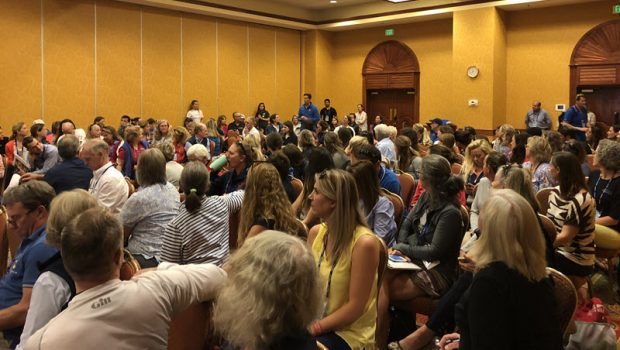


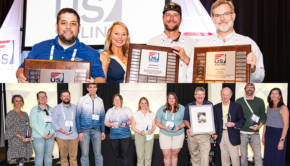
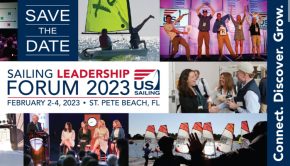
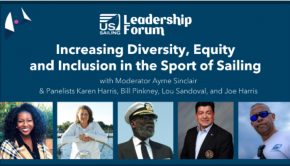
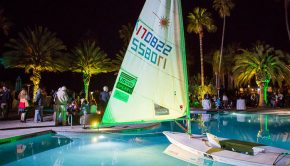
 We’ll keep your information safe.
We’ll keep your information safe.